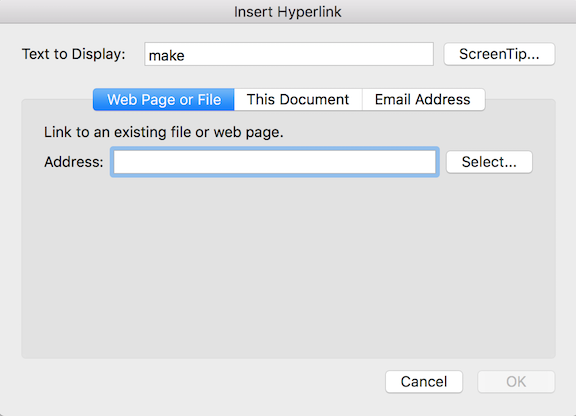How To Give Format To An Email On Mail For Mac
Posted : admin On 02.01.2019
Setting up Mail From Other Accounts Mail supports all the most popular mail services, including Outlook, Exchange, Gmail, Yahoo! Mail, iCloud, and any. Click the Mail tile to start the app, and press the “Get Started” button. If you’re logged into your Microsoft account, the app should already have your outlook.com email address in the list. Click the “Settings” icon in the lower left-hand corner, or swipe in from the right edge of the screen, and then tap “Settings.” From the right sidebar go to Accounts > Add Account. The “Choose an account” window will appear.
Mail comes ready with all kinds of popular email services. Choose the type of account you want to add and follow the on-screen instructions. If your settings are correct, then you’ll jump directly to that account’s inbox, ready to start processing mail. Office for mac home & business 2011 trial. If you’ve set up more than one account, you can switch among them by selecting “Accounts” in the top left corner. Link Multiple Inboxes Together In Mail, you can link your inboxes together, so you can see all the messages from all your accounts in one unified inbox. Point your mouse to the lower-right of the screen and click “Settings.” From the right sidebar, click “Manage Accounts > Link inboxes.” A pop-up box will open.
Email encryption in Outlook protects the privacy of messages you send by converting them from readable text into scrambled enciphered text. To be able to send and receive encrypted email messages, you need two basic things.
I had to leave it connected for over 14 hours for all of the music to be synced properly. Avast for mac cant synch iphone.
Now, simply choose the accounts you want to link and give the new linked inbox a name. Customize Your Mail Experience Click the Settings button in the lower right-hand corner of the screen, or if you’re on a touch device, swipe in from the right edge and then tap “Settings.” There are two kinds of settings in Mail: those specific to an account, and those that apply to all accounts. Settings that apply to all accounts let you tweak the entire aspect of your Mail experience, including personalization and reading options. Go to Settings > Personalization in the right sidebar. Here, you can pick from a collection of 10 different hues or use the Windows accent color for seamless integration. You can toggle between the light and dark theme and set the background to cover the entire window or just the right pane where you read new messages and compose new mails. To add your own background picture, click “Browse” and select any picture stored in your PC.
For more functional customization, click on Settings > Reading in the right sidebar to manage your day-to-day mail reading experience. For example, Caret Browsing in Mail lets you navigate the reading pane with your keyboard cursor. You can use the arrow keys, Page Up/Down to scroll, and press Home or End to jump to the beginning or the end of a message. You can toggle “Auto-open next item” on or off to indicate what you want to do when you delete a message—move to the next message, or go back to your background picture. Mail also lets you decide when a message is marked as read: • When selection changes (that is, when you choose another message) • Don’t automatically mark item as read (you have to mark it as read manually) • When viewed in the reading pane (it makes Mail flag a message as read only after you’ve had it open for a certain number of seconds) If you have more than one account in Mail, then you can tweak certain settings on a per-account basis.
In the settings menu, these can be tweaked for each individual account: • Quick Actions: Also known as Swipe Actions, this lets you operate on a message in the list by dragging your finger left or right across it. Swiping right marks the message as flagged and to the left archives it. However, you can customize what that right swipe and left swipe will do (or turn off swipe action feature entirely). You can set or clear a flag, mark a message as read or unread, archive, delete, or move. • Signature: This lets you create and add an email signature to all the messages you send from a particular account.